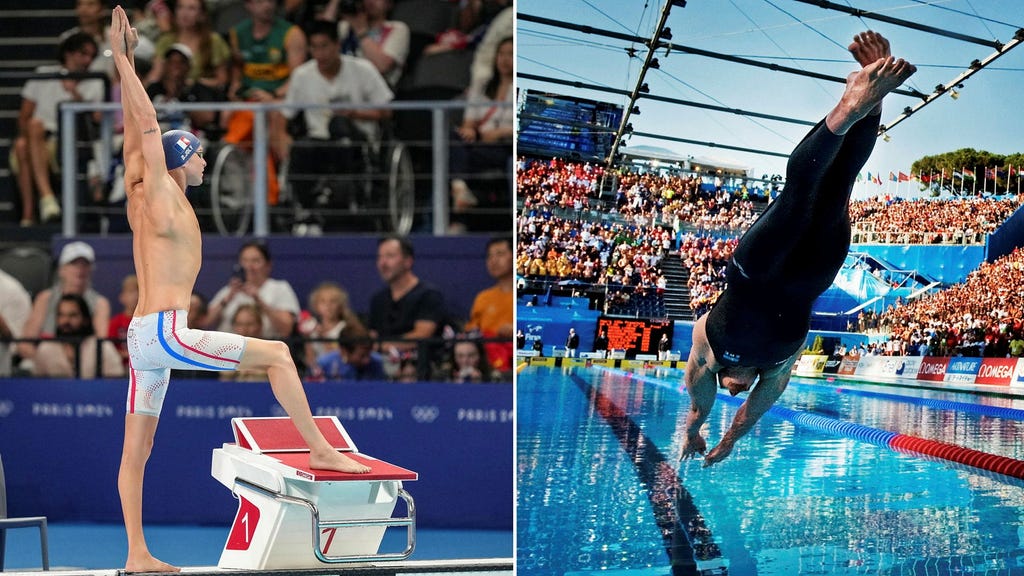The swimming world underwent a dramatic transformation in the late 2000s with the introduction of high-tech, full-body swimsuits known as ”super suits.” These suits, constructed from water-repellent synthetic rubber materials like neoprene and polyurethane, significantly reduced drag and enhanced buoyancy, leading to a surge in world records. The 2009 World Championships in Rome witnessed an unprecedented 42 new world records, highlighting the profound impact of these technological advancements. However, this era of unprecedented performance sparked concerns about the fairness and future of the sport, ultimately leading to the banning of these suits by the International Swimming Federation (FINA) on January 1, 2010.
The ban on super suits brought about significant changes, particularly in the regulations regarding swimsuit coverage. While women’s suits continued to cover a larger portion of the body, although not made of the same material as the super suits, men’s suits transitioned from full-body coverage to ”jammers,” which are knee-length, tight-fitting shorts. This shift resulted in a more pronounced difference in coverage between men’s and women’s swimwear, a distinction that continues to this day. Both men’s and women’s suits are now restricted from covering the knees, but the women’s suits still offer more coverage overall. This difference in coverage potentially impacts hydrodynamics, influencing water resistance and body position in the water.
The legacy of the super-suit era remains apparent in the world record statistics. While numerous records set during the super-suit era have since been broken, a few remain, serving as a testament to the dramatic impact of these suits on performance. As of the current time, five individual records and two relay records from the super-suit era still stand on the men’s side, while only one women’s record from that period remains unbroken. This discrepancy suggests that women’s swimming adapted more quickly to the rule changes, potentially aided by advancements in suit design specifically for women.
The evolution of swimming technology extends beyond swimsuits. The introduction of angled starting blocks has played a pivotal role in enhancing starting performance. Unlike the flat starting blocks used in the past, which demanded greater strength and technical skill for a powerful ”track start” (one foot in front of the other), the angled blocks provide additional leverage, enabling swimmers to generate more power and velocity off the start. This change has democratized the start, making it more accessible to a wider range of swimmers and contributing to faster times overall. This change, coupled with continued advancements in training techniques and analysis, suggests a bright future for the sport, with the potential for even faster times on the horizon.
Expert analysis of the sport’s progression, including insights from former Olympic and World Championship medalist Anna-Karin Kammerling, reveals a nuanced understanding of how the sport has evolved. Kammerling emphasizes the role of technological advancements in training analysis, which allows for more precise adjustments and improvements. She highlights how current swimmers benefit from detailed analysis of their races and training, enabling targeted improvements based on data and scientific understanding, compared to the anecdotal or feeling-based adjustments of the past. This enhanced understanding of body mechanics, coupled with sophisticated monitoring of athletes’ physiological responses to training, has contributed to the ongoing pursuit of faster times and improved performance.
Looking ahead, the future of competitive swimming is ripe with potential. While there seems to be no immediate appetite for a return to full-body suits for men in the near future—as suggested by national team coach Martina Aronsson—the continuous refinement of training techniques, coupled with ongoing advancements in swimsuit technology, points to a dynamic landscape of evolving performance. The increasing depth of talent, particularly in men’s swimming, suggests that future breakthroughs and records may be on the horizon. The combination of these factors promises a thrilling and competitive future for the sport, with the potential for exciting new achievements in the years to come.














